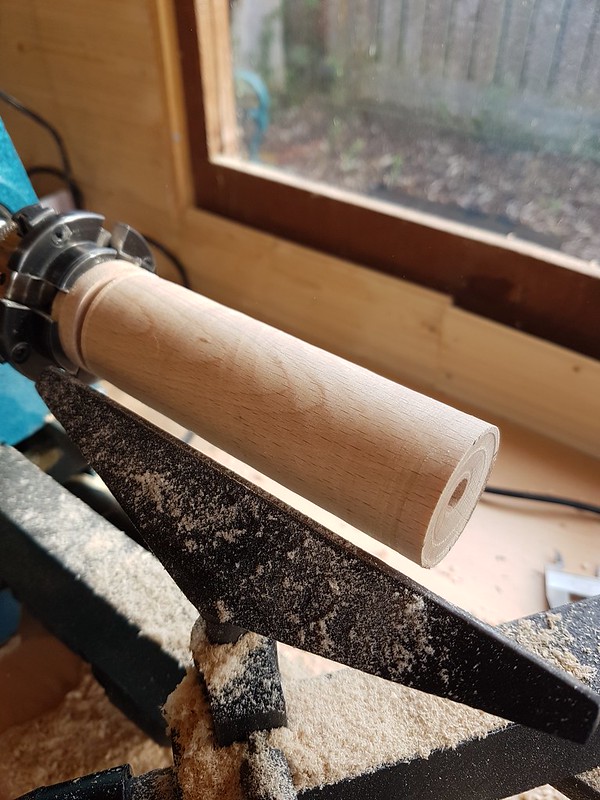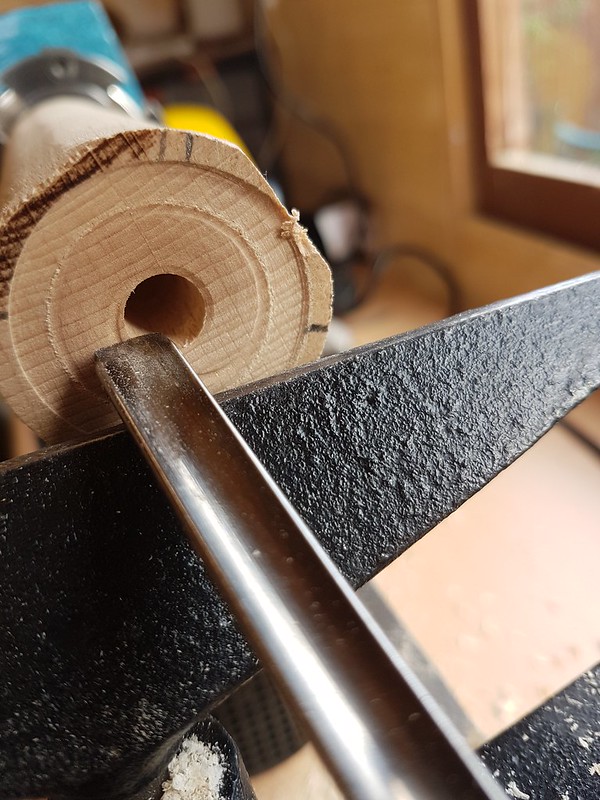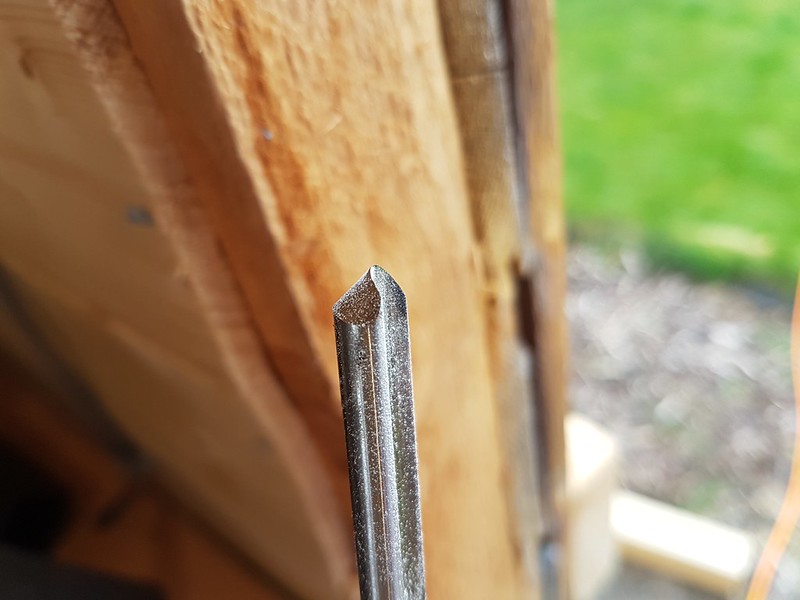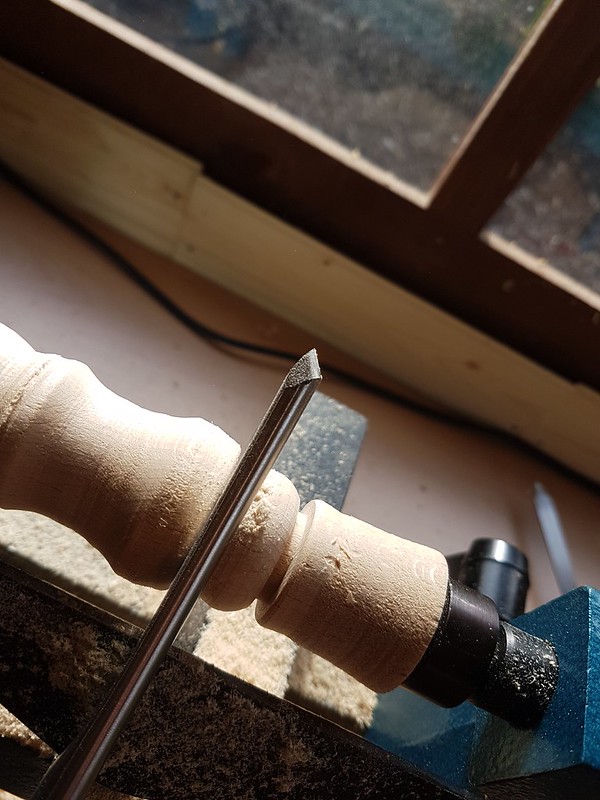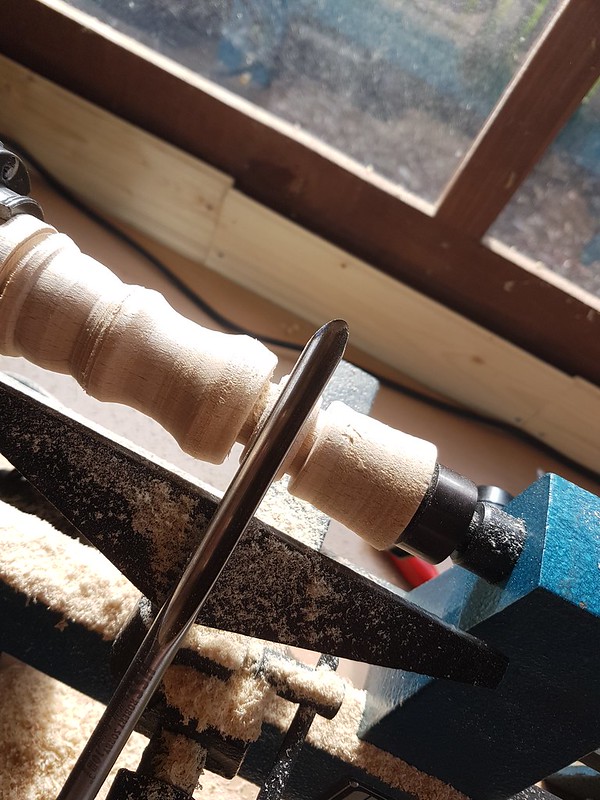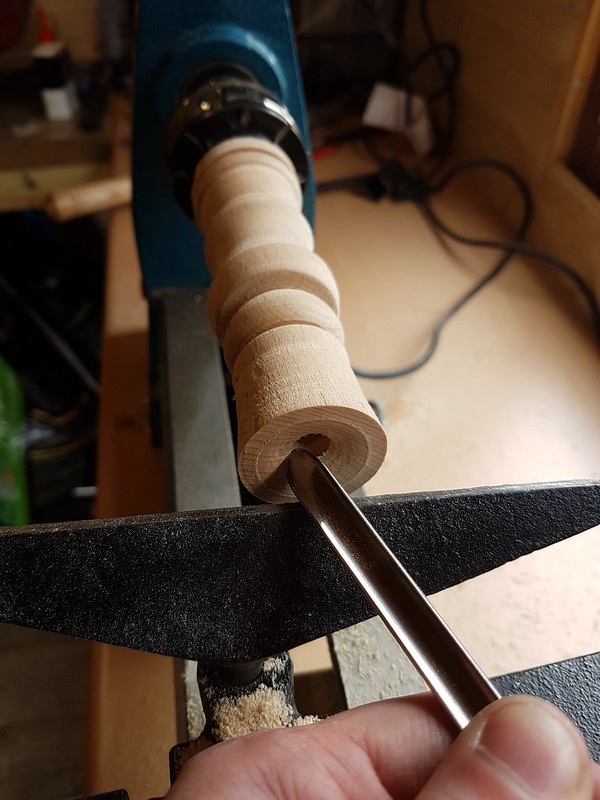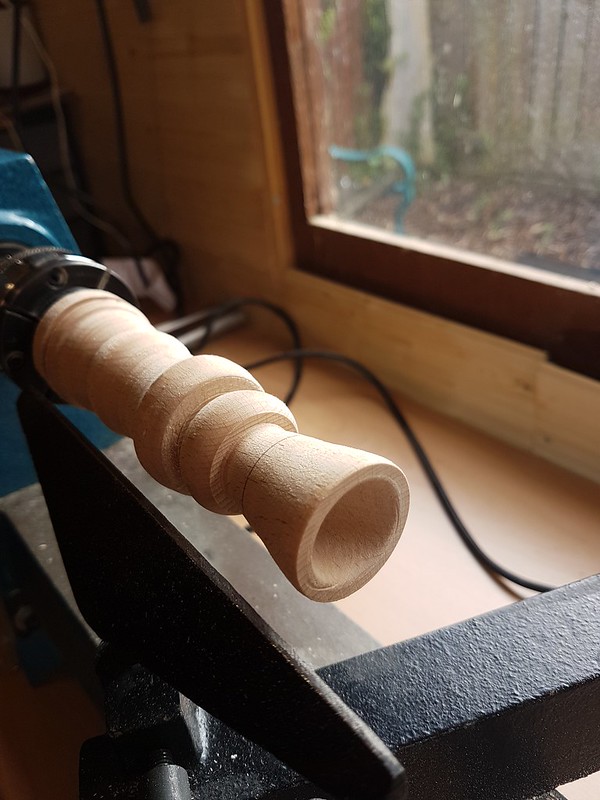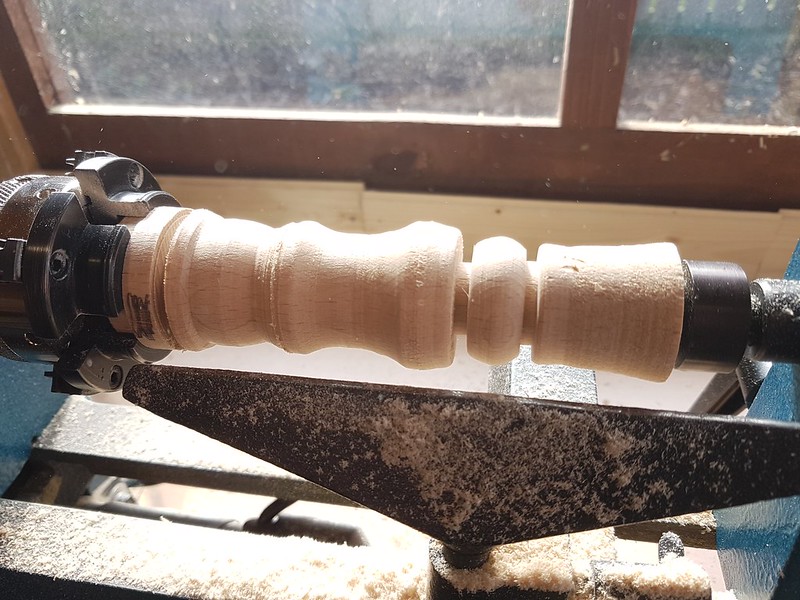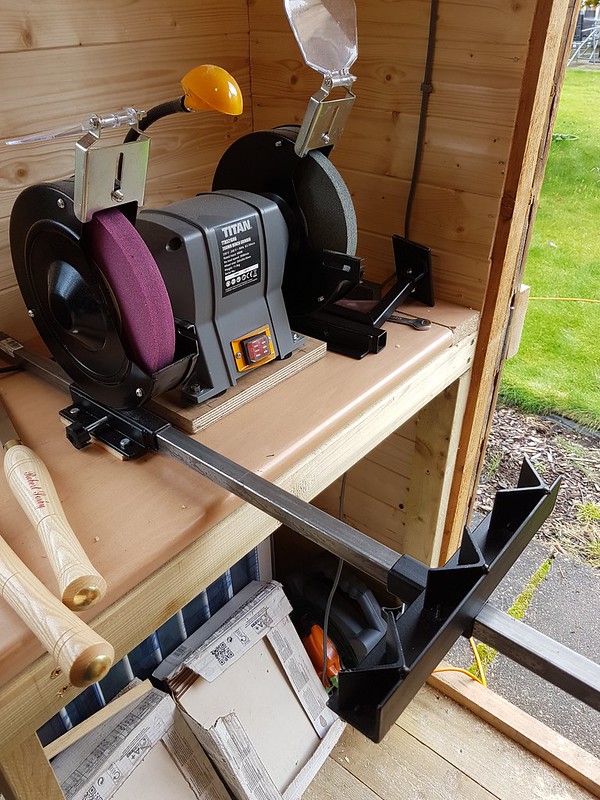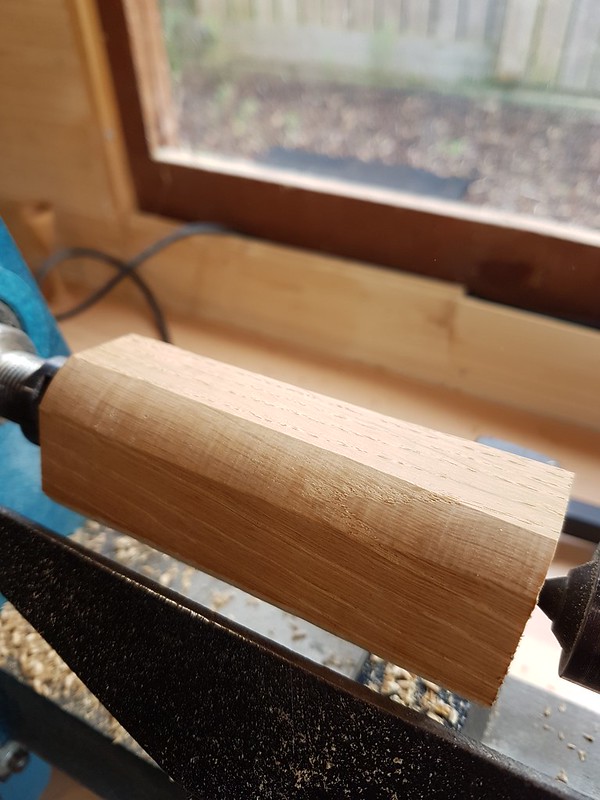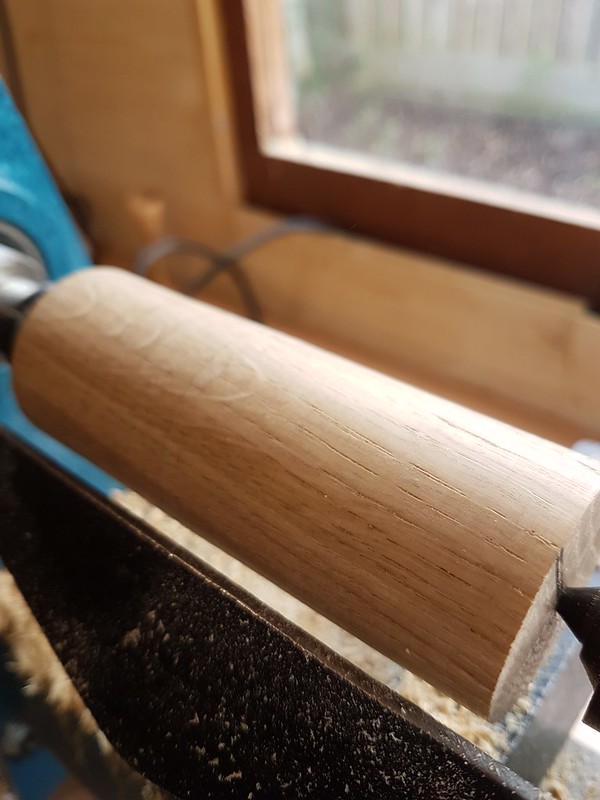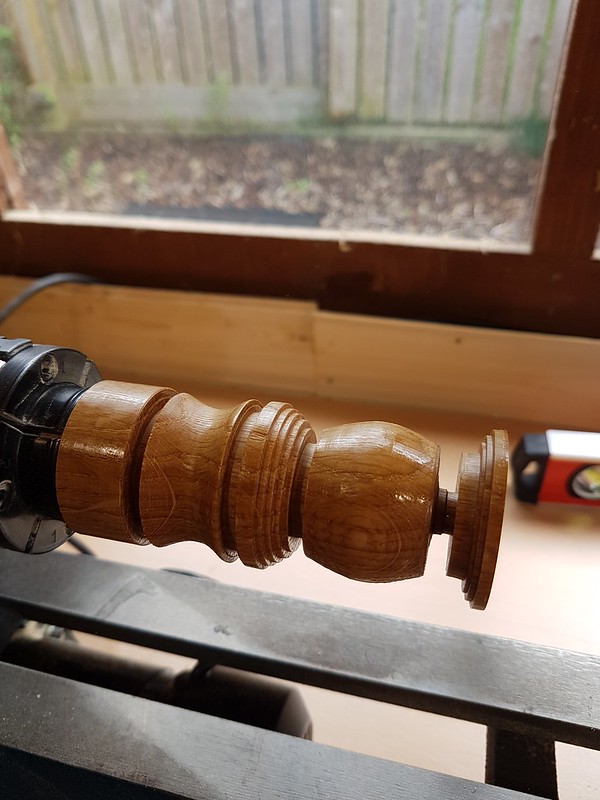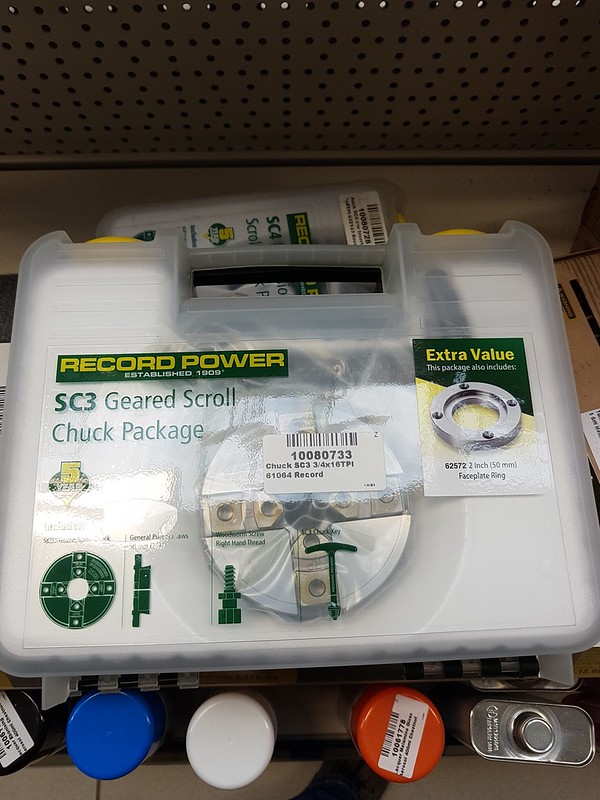PMP
Established Member
Mark Hancock":3jjii1nq said:Hi
You appear to be trying to hollow parallel grain timber with a swept back gouge which isn't the best tool for the job and difficult to do. For small work a 45 degree fingernail grind on a spindle gouge is much better.
Hi, thanks for the tip.
I didnt make clear my earlier attempts at it were with my small fingernail 3/8" spindle gouge, that caught on the tip of the tool as the wall curved in, the bowl gouge was to see if that was the more appropriate tool, however it seemed i was on the correct path to start with, just had bad tool use that caused the first catch.
At least i saw where the issue there was.
I also found a local timber merchant who said they can provide stuff but if its smaller scale stuff, there is a local joiner carpenter nearby.
I had a walk round and asked if they sold stuff etc, the guy took me into workshop and said have a pick of what i fancy, i got 3 12" by about 8" wide and 2.5" deep planks of Beech, Iroko and Oak for a fiver!





